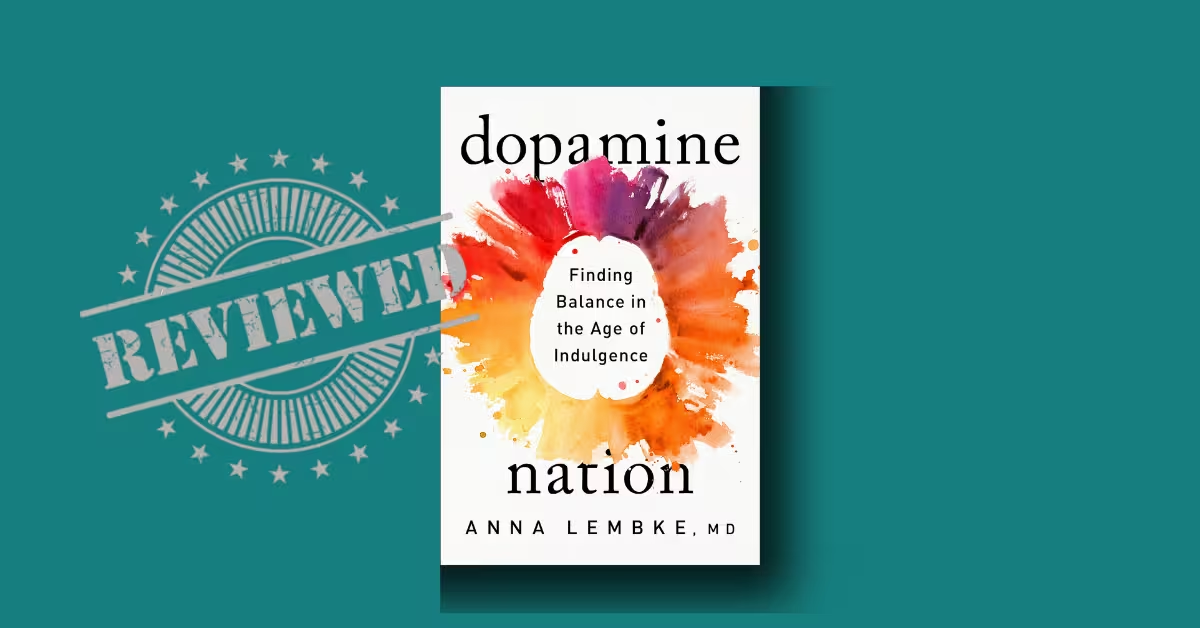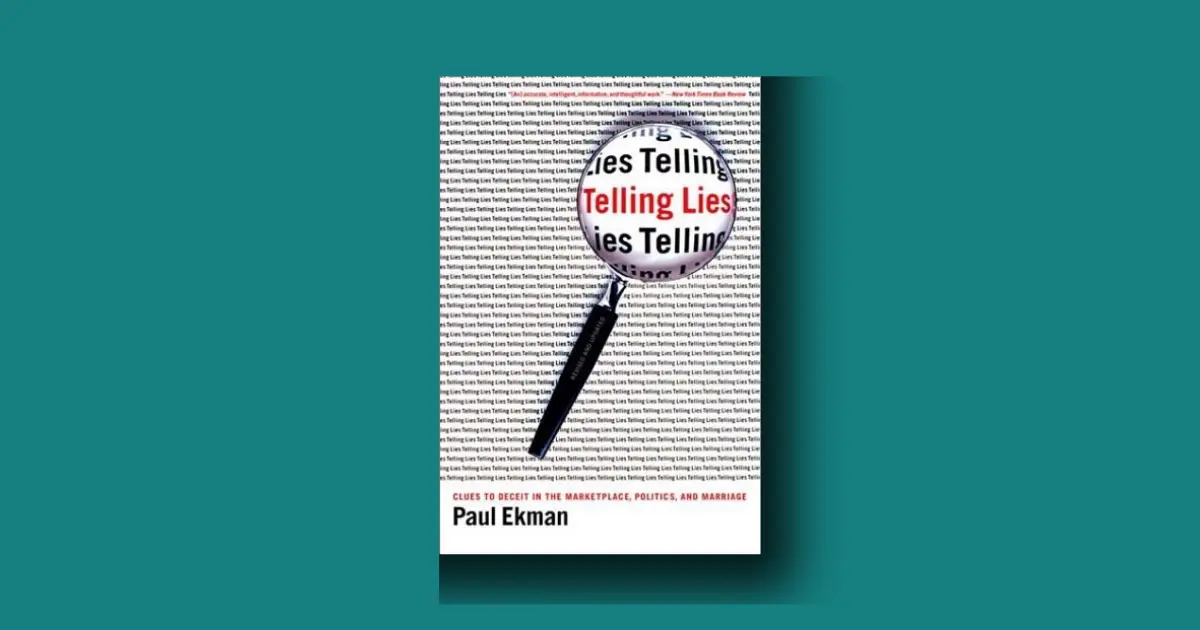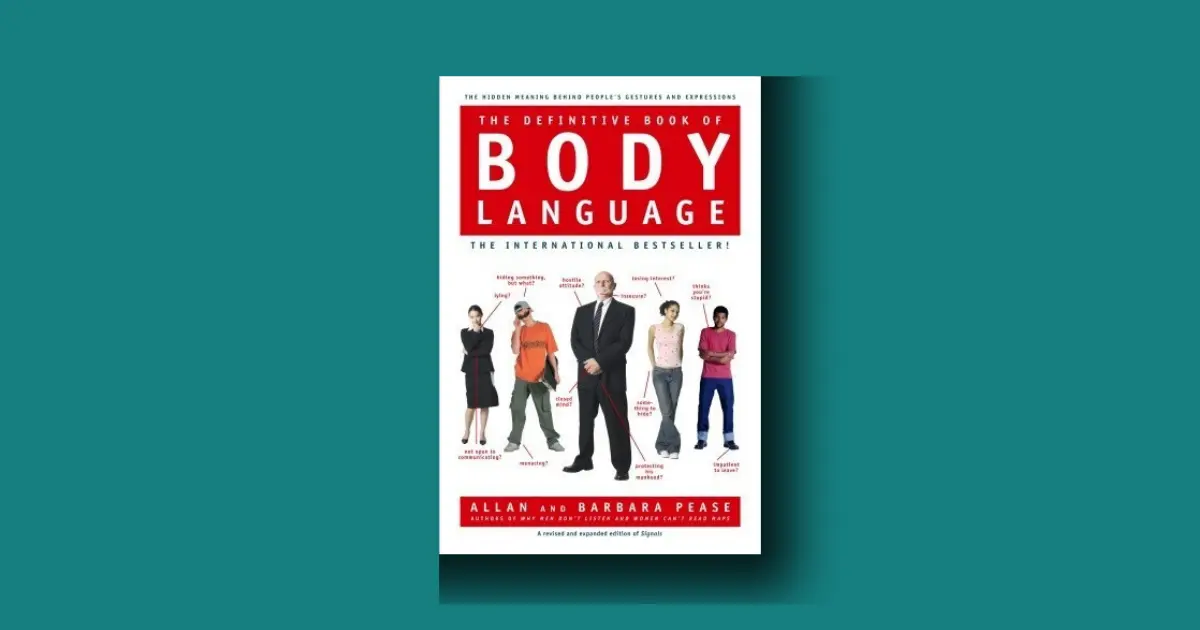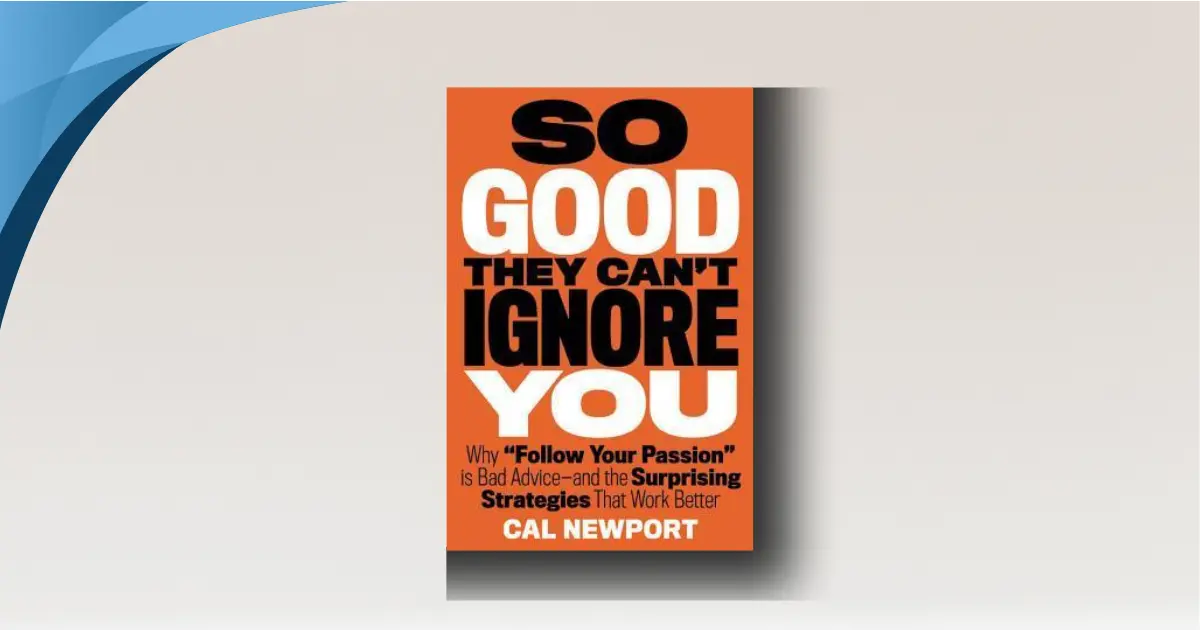Dopamine Nation by Anna Lembke is a non-fiction, science-grounded exploration of how dopamine drives addiction—from smartphones to substances—and how to practice dopamine fasting and self-binding to restore a healthy pleasure–pain balance. It’s among the most searched terms in mental health because everyone who has ever doomscrolled, binged, or micro-dosed novelty wonders: Why don’t the “rewards” actually feel rewarding anymore? Lembke answers that and more, mixing lab-grade neuroscience with human stories you won’t forget.
Modern life has become a 24/7 slot machine. Dopamine Nation shows how to stop pulling the lever, rebalance your brain, and reclaim real satisfaction.
When we binge on quick hits of pleasure—digital, chemical, or consumptive—our brain’s “pleasure–pain balance” tips toward pain; the antidote is deliberate abstinence, self-binding, and honest community so dopamine can reset and ordinary life feels good again.
Neuroscience places pleasure and pain in overlapping circuits and measures addictive “pull” via dopamine release; sustained overuse downregulates receptors and creates a deficit state (Nora Volkow’s PET work; opponent-process theory; conditioned cues), while one-month abstinence frequently restores mood and function (e.g., Schuckit’s inpatient alcohol study).
Best for / Not for: Best for readers who sense their habits (scrolling, porn, shopping, weed, gaming, alcohol, stimulants) are driving anxiety, fog, or numbness—and want a rigorous, compassionate reboot. Not for those seeking a quick hack, a morality play, or purely biochemical fixes without behavioral change and social accountability.
Table of Contents
1. Introduction
Dopamine Nation: Finding Balance in the Age of Indulgence by Anna Lembke, M.D. (Dutton, Penguin Random House, 2021). Lembke is a Stanford psychiatrist and an internationally recognized addiction expert whose clinical stories anchor the book’s science.
This is narrative science writing (non-fiction) on addiction and behavior, pitched at the general reader but rigorous enough for clinicians. It sits at the intersection of neuroscience, psychology, and public health, with a practical, recovery-oriented bent.
The thesis is crisp: in an era of overwhelming access and potency, “the smartphone is the modern-day hypodermic needle, delivering digital dopamine 24/7 for a wired generation,” and the only way to feel good again is to rebalance the seesaw between pleasure and pain with abstinence, honesty, and community (Introduction, pp. 7–8).
If that line made you wince, you’re the intended audience.
Lembke weaves her own near-compulsion with romance e-novels with patients’ stories—like Jacob, an electrical-engineer who built literal “masturbation machines”—to prove a universal point: access + potency + novelty recalibrate the brain.
Not scolding. A toolkit—“DOPAMINE” (Data, Objectives, Problems, Abstinence, Mindfulness, Insight, Next steps, Experiment)—plus self-binding tactics across space, time, meaning to live sanely with abundant stimuli (Chs. 4–5).
2. Background
From scarcity to abundance
Evolution built our reward circuits for scarcity. We engineered abundance. The result is a dopamine-rich environment where cigarettes, opioids, ultra-processed foods, and “digital drugs” are easier and more potent than ever (Ch. 1).
Opponents in one circuit
Crucially, pleasure and pain are co-located and operate in an “opponent-process”: what goes up must come down—and the down lasts longer (Ch. 3). Cue a lot of “why do I feel worse after binging?” moments.
3. Dopamine Nation Summary
Part I — The Pursuit of Pleasure
Lembke opens with patients who escalate because technology removes friction. Jacob, after years of secrecy and shame, discovers online communities that “sync” electrical stimulation with porn—potency and novelty, on demand (Ch. 1). The larger case: “One of the biggest risk factors for getting addicted… is easy access to that drug,” whether opioids, weed concentrates, e-cigs, or algorithmic feeds (Ch. 1; data on supply creating demand, Prohibition’s effects, and modern surges).
She then flips to our cultural flight from pain—pills for everything, triggers, safe spaces, the obsession with happiness brochures (Ch. 2). “It was easier to take a pill than feel the pain,” says David, whose A-vitamins became Adderall, Ambien, Ativan—uppers to work, downers to sleep (Ch. 2).
The Pleasure–Pain Balance (Ch. 3)
Here’s the core science. Dopamine measures an experience’s addictive potential; faster spikes = more addictive (amphetamines ≈ +1000% in rats, sex ≈ +100%, nicotine ≈ +150%, cocaine ≈ +225%; diagrams pp. 41–42). Lembke’s memorable metaphor: little gremlins jump on the pain side to level the balance; with repetition they grow “bigger, faster, and more numerous,” creating tolerance and a new hedonic set-point on the pain side (pp. 44–49). In plain English: overuse makes normal life feel gray.
She also unpacks cue-dependent learning (“people, places, things”). The dopamine spike shifts to anticipation—and if the expected reward doesn’t arrive, dopamine plunges below baseline, producing craving (pp. 50–53). That’s why near-misses in gambling hook us (Linnet 2010 is summarized).
Part II — Self-Binding (Chs. 4–6)
The eight-step DOPAMINE method begins with Data (“how much, how often?”), Objectives (“what problem are you solving?”), Problems (costs you’re minimizing), then Abstinence—a full month to reset (not one week).
She cites Marc Schuckit’s inpatient study: after 4 weeks of not drinking, 80% of men who had met criteria for major depression no longer did—strong evidence that mood often normalizes after abstinence (Ch. 4). Mindfulness is how to endure withdrawal’s anxiety spikes. Then Insight, Next steps, and Experiment—moderation for some, but many eventually choose sustained abstinence (Ch. 4).
In Space/Time/Meaning binding (Ch. 5), readers get tactics: remove or lock up triggers (kSafe, unplug TV, hotel minibars removed, devices in a bank box). Use chronological fences (“never before 5 p.m.”; “only weekends”).
Add meaning-based rules (“not with my kids in the house”; “only after the run”). Pharmacologic “locks” (e.g., naltrexone to blunt alcohol reward; disulfiram to pair drinking with sickness) are tools, not cures; without new habits, people route around locks—Lembke’s patient staged a disulfiram “mouth check” by hiding the pill in a missing-tooth gap and then drank anyway (Ch. 5).
Part III — The Pursuit of Pain (Chs. 7–9)
Counterintuitively, pressing on the pain side—cold showers, strenuous exercise, service to others—can tilt the seesaw back toward equilibrium and make pleasure possible again.
Two social practices stand out: radical honesty (tell the full truth about use, shame, slips) and prosocial shame (community standards that call us up rather than cancel us). The conclusion’s title says it all: “Lessons of the Balance.”
Highlights
- The line you’ll quote: “The smartphone is the modern-day hypodermic needle…” (Intro, pp. 7–8).
- The model you’ll remember: a pleasure–pain balance with gremlins—tolerance means ordinary life feels worse until you reset (pp. 44–49).
- The numbers you’ll use: dopamine jumps—chocolate +55%, sex +100%, nicotine +150%, cocaine +225%, amphetamine +1000% (pp. 41–42).
- The plan you’ll try: DOPAMINE (1-month abstinence is the pivot).
- The guardrails you’ll build: space, time, meaning self-binding, plus community accountability.
3. Dopamine Nation Analysis
Does Lembke support the argument?
Yes—via converging evidence: neuroimaging (e.g., dopamine D2 receptor downregulation in addicted brains after abstinence), opponent-process theory, animal cue-conditioning, and robust clinical vignettes. Volkow’s PET imaging, for example, shows dopamine signaling below normal in addicted patients two weeks into abstinence—corresponding to dysphoria and craving that drive relapse.
Where the logic is strongest
(1) Environment matters: supply/potency/novelty are not neutral; they shape brains, not just choices. (2) Abstinence windows: the 4-week reset is clinically practical and empirically plausible (Schuckit; Lembke’s clinic). (3) Social design: the book rescues old ideas—confession, sponsorship, ritual constraints—and explains why they work in neurobiological terms.
Possible gaps
Lembke sometimes gestures to societal solutions (regulation, urban design) but zooms back to individual choice. Readers seeking macro-policy remedies will want more on taxes, ad restrictions, platform design, or algorithmic accountability.
Does it contribute meaningfully?
Absolutely. It translates dopamine lore into a field guide anyone can use—without dumbing down the science. In the crowded “dopamine detox” discourse, it’s easily the most humane and practicable text I’ve seen.
4. Strengths and Weaknesses
What I found compelling
The metaphors are sticky: once you picture gremlins hopping on the pain side of a seesaw, you can’t unsee your own tolerance. I also appreciated the frank stories—Jacob’s engineering mind optimizing pleasure until life collapsed; Delilah’s “wax pen” anxiety dissolving after four sober weeks—a narrative arc many readers will recognize in themselves.
What I wrestled with
At times the book risks overgeneralizing from clinic to culture. Some readers with trauma, poverty, or structural barriers may need expanded frameworks (housing, jobs, care) before abstinence can begin.
5. Dopamine Nation Reception
Public discourse
Since publication, Dopamine Nation has shaped how mainstream media talk about “dopamine fasting” and device-driven compulsions. Even BBC explainers and Harvard Health critiques of Silicon Valley “dopamine fasting” fads echo Lembke’s core caution: dopamine itself isn’t the villain; misunderstanding neuroscience is.
Happiness context
Parallel to Lembke’s argument, the World Happiness Reports have tracked declining well-being in affluent nations; the U.S. recently dropped out of the top 20, with the sharpest dips among youth—consistent with the book’s thesis that abundance + hyperstimulation ≠ thriving.
6. Comparison with similar works
Against “dopamine detox” articles
Short-form pieces tend to suggest a weekend off screens “resets dopamine.” Lembke’s one-month abstinence plus self-binding and community is a tougher, more realistic protocol—and it integrates co-morbidities (anxiety, depression, ADHD) rather than promising a biohack.
Alongside habit classics
Compared with Atomic Habits (a systems book) or The Power of Habit (a loop model), Dopamine Nation adds the hedonic balance and cue-driven craving physiology; it shows why stackable “quick wins” can backfire when the balance is already tilted to pain.
7. Dopamine Nation Practical Playbook
1) Track your inputs (Data). For 72 hours, log “how much, how often, where, with whom” for your top habit (weed, liquor, games, porn, TikTok, buying). Name what it “solves” (anxiety? boredom? loneliness?).
2) Choose a month. Commit to four weeks off the high-dopamine behavior/substance. Expect week 1–2 to feel worse (the deficit state) and week 3–4 to brighten. If nothing improves, you may have a co-occurring condition that deserves treatment after the abstinence window.
3) Mindfulness during withdrawal. Notice urges without obeying them. Label the cue, the urge, the body sensation. Remind yourself: “This is the gremlins jumping; it’s supposed to feel lousy for a bit.” (Ch. 4).
4) Self-bind in Space, Time, and Meaning.
- Space: Put friction between you and the cue—unplug TV; kSafe your phone at night; ask hotels to remove minibars/TV; move apps to a “friction folder” you can only open once a day.
- Time: Shrink windows—“Never before 6 p.m.”; “Only Saturdays.” Rats with limited access do not escalate like those with 6-hour access; humans rhyme.
- Meaning: Add values—“I don’t drink when I might drive”; “No porn on devices my kids can find.”
5) Tell the truth. Radical honesty collapses the double-life. Tell one trusted person your real numbers. Join a group if you can.
6) Press the pain side (carefully). Cold shower, hill sprints, a hard volunteer shift, or a tough conversation. Short pain can nudge your balance toward pleasure—Lembke’s counterintuitive but empowering prescription (Part III).
8. Dopamine Nation Quotes
“The smartphone is the modern-day hypodermic needle, delivering digital dopamine 24/7 for a wired generation.” — Introduction, pp. 7–8.
“Pleasure and pain work like a balance… every time the balance tips toward pleasure, powerful self-regulating mechanisms kick into action to bring it level again.” — The Pleasure–Pain Balance, pp. 43–44.
“With repeated exposure… the after-response to the side of pain gets stronger and longer… (tolerance and neuroadaptation).” — pp. 46–47.
“A minority of patients (about 20 percent) don’t feel better after the dopamine fast…” — Ch. 4, abstinence caveats and co-occurring disorders.
“Self-binding… openly recognizes the limitations of will.” — Ch. 5, Space/Time/Meaning framework.
9. Personal POV on Dopamine Nation
What landed most for me wasn’t the lab data—it was the image of gremlins camping on the pain side with “inflatable mattresses and portable barbecues.” It gave me a non-moral vocabulary to talk about my own “just one more” loops. I took a one-month break from my no-friction habit (late-night feeds + video highlights), kSafed my phone after 10:00 p.m., and noticed by week three that boring things—reading print, making soup, actual eye contact—got color again. That’s the book’s quiet promise.
If I had to compress Dopamine Nation into a single “do this” card for your fridge, it would be: Track → 30-day fast → tell someone → add friction → move your body → help someone → keep going.
10. Conclusion
If your days oscillate between seeking just one more and feeling oddly joyless, Dopamine Nation is your map back to baseline.
General audiences will understand it; clinicians will dog-ear it; parents will quote it to their teens. If you work in product design, policy, or education, read it as an ethics text. If you’re in recovery—or dopamine-curious but not yet convinced—the stories will feel like someone finally turned on the light.
Related



